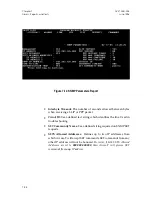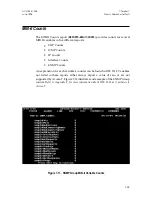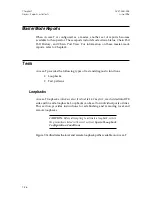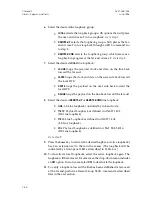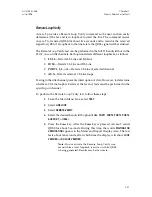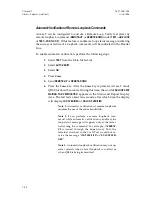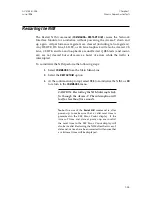
Bit Error Testing
When the Access-T is transmitting a QRSS test pattern toward the network, it
monitors the signal coming from the network for the QRSS pattern. If the QRSS
pattern is looped back toward the Access-T (either locally, in the network, or at
the far end), the Access-T will sync on the QRSS pattern and report any bit errors
detected.
Note:
The QRSS pattern is always transmitted in the full 8 bits
(64 kbps) of each DS0. If equipment in the looped path is
transparent to only 7 bits (56 kbps) per DS0, numerous bit
errors will occur.
Use the following procedure to perform a bit error test:
1.
Ensure that the desired loopback is in effect and that a QRSS test
pattern is being transmitted. Procedures are given in the section
entitled Transmitting a Test Pattern.
2.
From the Main Menu Line, select
TEST
.
3. Move the cursor to
BIT ERRORS
and press the
Enter
key.
4. To inject errors into the transmitted QRSS signal, press the
Space Bar
.
Detected errors are indicated under
BIT ERRORS
.
The error count maintains a dynamic display (refreshed every second) of detected
errors. The test will continue as long as the QRSS signal is being transmitted.
To clear the bit error count, follow these steps:
1.
Ensure that the desired loopback is in effect and that a QRSS test
pattern is being transmitted. Procedures are given above.
2.
From the Main Menu Line, select
TEST
.
3. Move the cursor to
BIT ERRORS
and press the
Enter
key.
4.
Press
0
to clear the bit error count.
5.
Press the
Esc
key to return to the Main Menu Line.
Chapter 7
ACST-0351-005
Alarms, Reports, and Tests
June 1996
7-34





